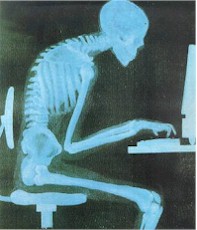Often, you'll hear someone say, off hand, they're doing research on something they're interested in learning more about. This is a form of expanding one's knowledge but it is different than the research we're talking about here. Research in MT uses the
scientific method. Additionally, many students are required to write a "term paper", not usually a research paper. A term paper is most often a review of the scientific literature (referred to as a lit. review). There's not usually any actual, hands on research being conducted (although, sometimes there is).
Here is a link from Columbia University that explains the research article format. It's pretty standard and helpful for reading through a research article. Let me just say, it takes a while to fully comprehend what you're reading in a research article. How could you, unless you've been on a research project or gone through graduate school? For the time being, just read through the abstract. The abstract is a summary of the research article. Read the background (AKA the intro) and then skip down to the conclusion. If you're still interested, then see what methods they've used in this study. After the methods, check out the results. Then, it's good to read the intro and the conclusion again (because by now the 'ole brain is clicking). If you're still interested, now's the time to read the entire article.
Why should we care about research anyway; we just want to practice, right? Lots of reasons including:
- Other health care practitioners will take us seriously;
(because it puts us all on the same page).
- Research helps us understand our work;
(at a deeper level and it WILL make you a better practitioner).
- You can use research to promote your practice;
(which is what this blog is getting to).
Research articles provide evidence of the effects of an intervention; in this case, the intervention is massage therapy. Because of the evidence, we can now say massage therapy is effective for decreasing
anxiety, depression, blood pressure, and heart rate. We also know there is evidence that MT might be effective for
non-specific lower back pain (both sub-acute and chronic). Massage therapy has also been found to
increase the weight of pre-mature infants. You can use this information to support and promote the treatment you provide. Potential clients like this data, the bio-medical community respects it and you will gain confidence in your work as a result of knowing the evidence exists (that's how it's most often referred to in science, as evidence, not so much as research).
A few tangible ways of providing the evidence that I've heard other MTs say they've found success with:
A. Printing off the article and providing it to clients in the reception area of your practice;
B. Sending abstracts to clients via e-mail;
C. Taking several abstracts along to doc visits, fitness centers, networking events or where ever else you are trying to establish a MT referral source;
D. Posting it on your FP page, LinkedIn, Twitter, or any other social media site.
Here are two of the top online sources to finding MT research articles:
You might find the Massage Therapy Foundation (MTF) site easier to navigate the first time around. The MTF site has a wealth of other valuable research information too. Both links ultimately end up at PubMed, which has many science journals and is a good place to get to know if you're really interested in the MT evidence. When you do a search on PubMed, clear the search box (click on the tiny x at the right), type in the area of interest, and massage. For example, you could start by typing: "non-specific lower back pain AND massage." Currently, this search results in 15 articles. If you look to the right hand corner of the page, you'll see you can filter your results further. Click on reviews and you will get the consensus of evidence for the effectiveness of MT on non-specific lower back pain (when I looked today there were three).
Clicking on the link for the reviews, I see one of the three articles that came up has free access to the full article. Click on this link and then look again to the right corner. There you'll see the journal, in this case, Medicina. Follow the link and you'll find the connection to the PDF. This article is written in Lithuanian; yikes, I don't read Lithuanian, do you? To avoid this, go back to the main search page and look for limits at the top of the page under the search box. Here you can narrow your search. I usually do this in the beginning of a search and narrow mine to the last five years of publication, English, and abstracts with free full texts.
Your new research knowledge can enhance your MT practice. Just keep at it, a little at a time, and be patient with yourself; it will come. If you have any questions, shoot me an e-mail, I'll do my best to find you an answer. If you're really gong ho, here are a few more reputable links you can check out:









